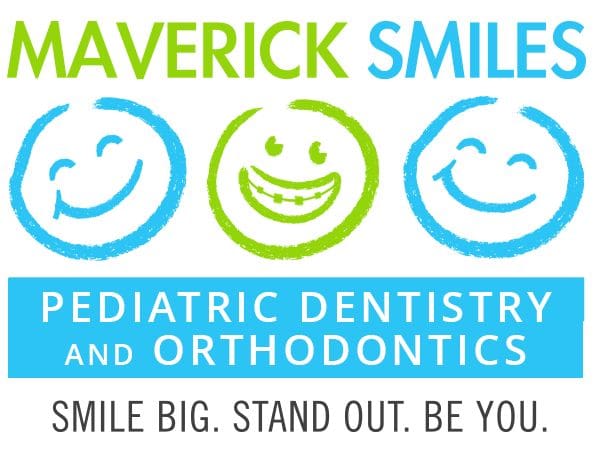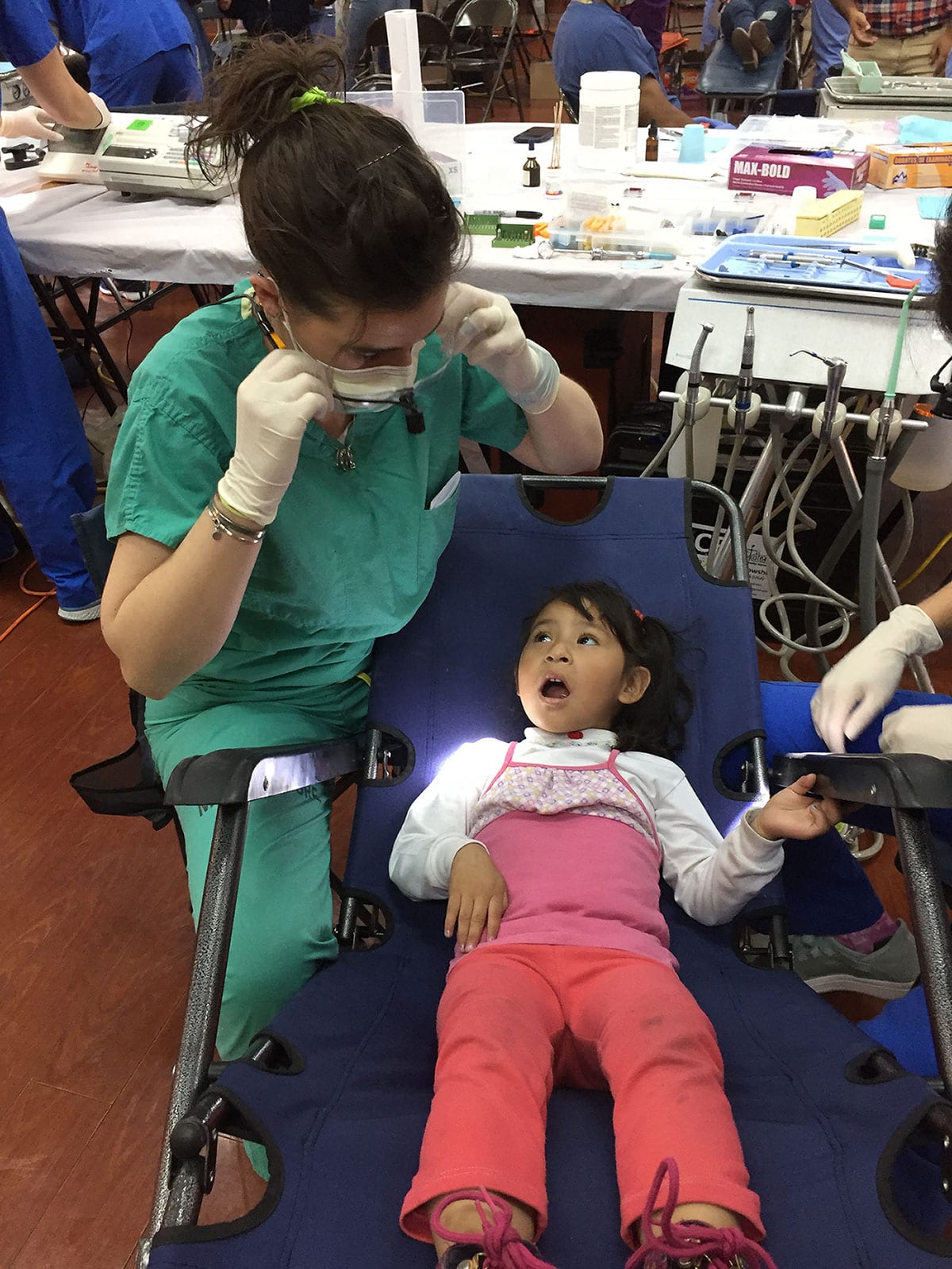Services
Pulpotomies
“Your child needs a root canal”—words no parent wants to hear. Breathe easy! Nerve treatments on primary teeth are not the same as root canals on permanent teeth and we are trained to perform these “baby” root canals on young patients. We’ll hold your child’s hand every step of the way.
The nerve of the tooth is also called pulp tissue. When bacteria from a cavity penetrates into the pulp tissue, it becomes necessary to remove a portion of the pulp in order to prevent further pain and infection. Removal of pulp tissue (pulpotomy) is done quickly and comfortably. A medicament is then placed and the tooth is restored with a stainless steel crown for best results. Left untreated, the tooth will become further infected and possibly abscess.
Space Maintenance
If your child loses a tooth prematurely, there’s a dental appliance that can be used to hold the space open for the permanent tooth that is meant to fill it. The device is called a “space maintainer” or a “space maintenance appliance.” Made of metal and/or plastic, space maintainers are usually fixed (cemented) and have a specific purpose: to help your child develop the best bite possible and hopefully avoid the need for braces later on secondary to space loss. This device does not gain space, but will maintain the space remaining after premature loss of a primary tooth.
Nitrous Oxide
Nitrous oxide or “laughing gas” is a safe and effective treatment, even for children. It’s used to sedate and calm patients who may feel anxious. For your child, it’s a relaxing and comfortable way to get through a dental procedure.
Your child will inhale nitrous oxide through a tiny mask placed over the nose. He or she should not experience any adverse effects. According to the American Academy of Pediatric Dentistry, less than 0.5% of young patients have nausea or vomiting. We advise parents to allow their child only a light meal for two hours prior to the procedure.
Your child will breathe 100% oxygen for five minutes following use of nitrous oxide, this will also decrease the risk of nausea as well as the risk of headache and disorientation.
Sealants
A sealant is a bonded coating that can be applied to the chewing surfaces of back teeth. This prevents food and plaque from accumulating in the grooves, thereby reducing the risk of decay. Even with proper brushing, it can be difficult and sometimes impossible to remove food and bacteria from the tiny grooves and pits on the molars making the chewing surface of these teeth more vulnerable to developing cavities. Applying sealants is a quick and comfortable procedure. According to the AAPD, sealants can reduce the risk of cavities on the chewing surface of molars by 72%!
How long do sealants last?
Sealants are typically long lasting, but need to be evaluated by your dentist. The sealant can remain on the tooth for many years if proper care is taken. Some hard foods, such as hard candy, chewing ice, or sticky foods, such as taffy or gummies, may dislodge a sealant and should be avoided. If the sealant becomes dislodged, your dental professional will make sure the tooth is cavity free and re-apply the sealant
How effective are sealants?
Sealants are effective in preventing cavities on the chewing surface of a tooth as long as they are intact. Keeping all of your maintenance appointments with your dentist can ensure the longevity of dental sealants. Remember, cavities commonly occur on other surfaces of the tooth as well, that aren’t covered by a sealant, such as in between the teeth! Proper brushing and flossing is imperative to protect the entire tooth from bacteria and cavities.
Does insurance cover the cost of sealants?
Many insurance companies cover the cost of dental sealants. Check with your dental insurance carrier to determine if you have dental sealant coverage.
Radiographs
Dental radiographs (x-rays) detect much more than cavities. They may be taken to survey erupting teeth, diagnose bone disease, evaluate the results of an injury, or plan orthodontic treatment. Radiogrpahs allow dentists to diagnose and treat conditions that cannot be detected during a clinical examination.
In general, children need radiographs more often than adults. Their mouths grow and change rapidly. Their teeth are more susceptible to tooth decay than adults. For high caries risk patients, the American Academy of Pediatric Dentistry recommends radiographs every six months to one year. Children with a lower risk of tooth decay may require radiographs less frequently.
Pediatric dentists are particularly careful to minimize the exposure of child patients to radiation. With contemporary safeguards, like lead aprons, high speed film, digital radiographs, and thyroid collars, the amount of radiation received in a dental radiograph is extremely low. In fact, radiographs represent a far smaller risk than undetected and untreated dental problems.
Fillings
Extractions
Crowns
Stainless steel crowns are silver crowns that cover the back teeth and preserve more of the tooth structure than other types of crowns. They withstand biting and chewing forces well and rarely chip or break. Stainless steel crowns are often used on young patients who are in active occlusion and require a crown that can adapt to an adjusting and growing mouth.
White crowns are used to strengthen decayed front teeth. They are can be strip crowns, made of a composite resin, or zirconia crowns. The zirconia crowns are more rigid and depend on a patient’s occlusion to be considered as a treatment option. White crowns are close in color to the natural teeth, so they are more cosmetically pleasing.
Dental crowns for children are generally completed in one visit, and will usually last until they are replaced by adult teeth.
Patients with Special Health Care Needs
Hospital Dentistry
Emergency Care
Life is full of surprises including dental emergencies. Don’t panic—we’re here to help.
If your child faces a dental emergency, give us a call immediately. If you need urgent treatment after hours, you can call our emergency number. We are always available and here to assist when your child’s dental health is at risk. Below are tips on dealing with urgent dental situations.
Bitten Lip or Tongue
If your child has a bitten lip or tongue severe enough to cause bleeding, clean the bite gently with water and use a cold compress (a cold, wet towel or washcloth pressed firmly against the area) to reduce or avoid swelling. Give us a call to help determine how serious the bite is.
Object Caught in Teeth
If your child has something caught between his or her teeth, use dental floss to gently remove it. Never use a metal, plastic, or sharp tool to remove a stuck object. If you are unable to remove the item with dental floss, give us a call.
Broken, Chipped or Fractured Teeth
If your child has chipped or broken a piece off of a tooth, rinse his or her mouth with warm water, then use a cold compress to reduce swelling. Try to locate and save the tooth fragment that broke off. Call us immediately.
Knocked-Out Tooth
If your child’s tooth has been knocked out, find the tooth and place the tooth in a clean container with cold milk. If you do not have cold milk you can use the patient’s saliva (have him/her spit into a cup enough to cover the tooth) or clean water. Take care to only touch the crown of the tooth (the part you can see when it’s in place). Call us immediately and/or head to the emergency room. The sooner an adult tooth is returned into its original position and splinted, the greater the chance of saving the tooth!
Loose Tooth
If your child has a very loose tooth, it should be removed to avoid being swallowed or inhaled. Twisting the tooth can help remove it atraumatically.
Toothache
If your child complains of a toothache, rinse his or her mouth with water and inspect the teeth to be sure there is nothing caught between them. If pain continues, do not apply heat or any kind of aspirin or topical pain reliever directly to the affected area, as this can cause damage to the gums. Children’s pain relievers may be taken orally. Schedule an appointment as soon as possible.. If you notice facial swelling,, call us immediately or and/or head to the local emergency room.
Broken Jaw
If you know or suspect your child has sustained a broken jaw, use a cold compress to reduce swelling. Call our emergency number and/or head to the emergency room immediately. In many cases a broken jaw is the result of a blow to the head. Severe blows to the head can be dangerous and even life-threatening. A suspected broken jaw will need to be evaluated by an oral surgeon.

